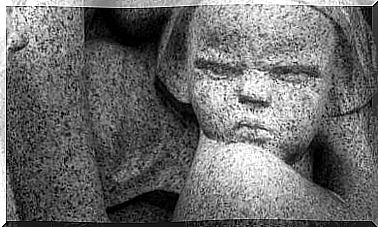The Schemes: The Submerged Part Of The Iceberg

The term “outline” is used in many areas of study. Generally speaking, an outline is a structure, a frame of reference, or a profile. This concept has a particularly rich history in psychology, mainly in the evolutionary area.
A schema would be a pattern imposed on reality or experience to help individuals explain it, to mediate perception, and to guide their responses.
Since Young’s schema therapy, this term flourishes from different childhood experiences that we could qualify as toxic. In this way, he defined a series of schemes that he called “early maladaptive schemes.”
We would then have a broad and generalized pattern or theme, made up of memories, emotions, cognitions and bodily sensations. The scheme would be relative to oneself and to one’s own relationship with the environment. It would have developed during childhood or adolescence, perpetuating itself throughout life, and furthermore, it would be dysfunctional for the person to a significant degree.
Early patterns are therefore counterproductive emotional and cognitive patterns that begin early in development and are repeated over and over again throughout our lives. In this sense, we can visualize the scheme with the metaphor of the iceberg, so that this would be the submerged, unconscious part, the one that is not seen.
The scheme would be activated at the moment in which some present event similar to the one experienced in childhood arises. When one of our schemes is activated, therefore, an intense negative emotion is experienced, such as pain for some loss, shame, fear or anger.

The origin of the scheme
When we are children, we harbor core emotional needs that must be met. No one could argue that a child needs affection, food, or clothing. It is a necessity for survival. The five core needs that are considered from schema therapy are:
- The secure bond with others, especially with parents.
- Autonomy, competence and sense of identity.
- The freedom to express valid needs and emotions.
- Spontaneity and play.
- Realistic limits and self-control.
It would be about universal needs that all of us have to satisfy. The problem is that sometimes some children don’t meet those core needs. Toxic childhood experiences are the main source of early maladaptive patterns.
Other influences, such as those of friends, school, the neighborhood or the very culture in which the child is raised, become more important as the child matures and can also influence the development of these patterns. However, these influences are not as powerful or as intense as those that have to do with the family nucleus in childhood.
Schemes in adulthood
As we have mentioned, the patterns are formed in childhood due to unmet needs, emotional deficiencies that stick like stakes and create a wound. That unhealed wound continues to hurt even though the individual has matured. When conceived as the submerged part of the icerberg, they remain latent, with no apparent effects. But the moment an event becomes familiar to us, the scheme kicks in and blossoms in all its glory.
When we say that the scheme is activated, we mean that our childish part is set in motion in order to satisfy that need that was left in the air. The problem is that nowadays, and from a rational plane, the adult no longer needs what he longs for.

Therefore, the goal is to heal the child and break the schemes. The adult has to realize that these needs were not met in his day and it is important that he begins to accept that reality.
Once accepted that the past cannot be modified, it would be converted to take actions that go against that scheme that anchors us in childhood. One of the ways to do this is with behavioral procedures.
In this case, a therapeutic objective could be to expose ourselves to meeting potential partners and to risk a new “abandonment”. However, this new “abandonment” would not suppose an unmet need, as it happened in childhood, since no adult needs another adult to function.
It is also desirable that the adult begins to protect that child who had deficiencies. That is, give yourself love, take care of yourself, accept yourself and validate yourself. The idea is to stop hurting the inner child and help him to overcome his gaps and hurts from the plane of adulthood.









